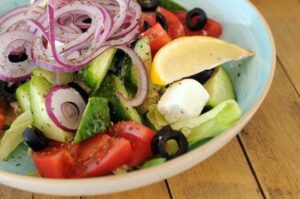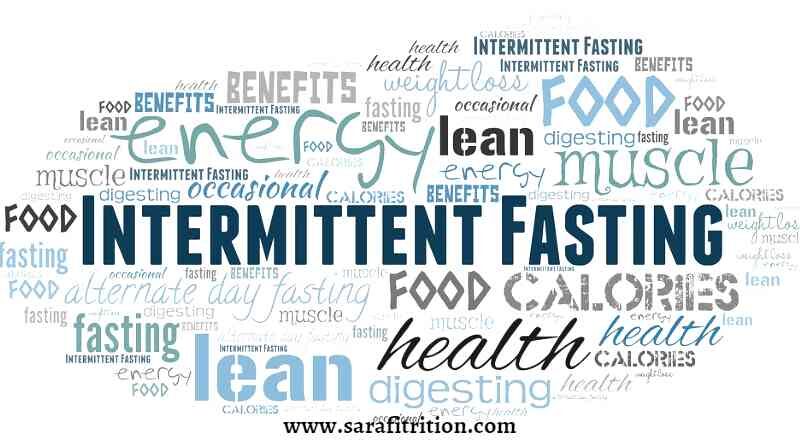Intermittent fasting is a popular method of dieting that has gained widespread recognition in recent years due to its numerous health benefits and ease of implementation. In this comprehensive guide, we will explore the basics of intermittent fasting, including what it is, how it works, and why it has become such a popular approach to health and wellness.
What is Intermittent Fasting?

Intermittent fasting is an eating pattern that alternates periods of fasting with periods of normal caloric intake. The idea behind this approach is to restrict caloric intake for a certain period of time, usually between 16-24 hours, and then eat normally for the remaining time. This method is thought to improve various health markers and promote weight loss by creating a calorie deficit.
How Intermittent Fasting Works
Intermittent fasting works by causing the body to switch from burning glucose for energy to burning stored fat. When the body is in a state of fasting, it is forced to find alternative sources of energy, leading it to break down stored fat for fuel. Additionally, this method of dieting has been shown to improve insulin sensitivity, reduce inflammation, and promote cellular repair.
Benefits of Intermittent Fasting
There are numerous health benefits associated with intermittent fasting, including:
- Weight loss: By reducing caloric intake, intermittent fasting can help individuals lose weight and achieve a healthier body composition.
- Improved insulin sensitivity: Intermittent fasting has been shown to improve insulin sensitivity, which can lead to better blood sugar control and a reduced risk of type 2 diabetes.
- Reduced inflammation: Fasting has been shown to reduce inflammation in the body, which can help prevent a wide range of chronic diseases.
- Increased longevity: Intermittent fasting has been shown to promote cellular repair and extend lifespan in various animal studies.
- Improved mental clarity: It has been shown to improve focus and mental clarity, potentially by reducing oxidative stress in the brain.
Types of Intermittent Fasting

There are several different types of intermittent fasting, including:
- 16/8 Method: This method involves fasting for 16 hours and eating for 8 hours.
- 5:2 Diet: This method involves eating normally for 5 days and restricting caloric intake to 500-600 calories for 2 days.
- Alternate Day Fasting: This method involves fasting every other day.
- Eat-Stop-Eat: This method involves fasting for 24 hours, 1-2 times per week.
Getting Started with Intermittent Fasting
If you are interested in trying intermittent fasting, it is important to speak with a healthcare professional first to determine if this approach is safe and appropriate for you. Once you have the green light, consider starting with the 16/8 method, as this is the easiest and most popular form of it.
To get started, simply choose a 16-hour fasting window, and eat during the remaining 8 hours. It is important to stay hydrated during your fasting period, and to consume healthy, nutrient-dense foods during your eating window. Over time, you may find that you are able to extend your fasting window or try other forms of it.
Tips for Intermittent Fasting
Intermittent fasting can be a powerful approach to dieting and health, but it can also be challenging for those who are new to it. In this section, we will explore some of the most effective tips for making the most of your intermittent fasting experience.
Choose the Right Fasting Method
One of the most important tips for making the most of your intermittent fasting experience is to choose the right fasting method. There are several different methods to choose from, each with its own set of benefits and challenges. It is important to choose a method that aligns with your lifestyle, schedule, and health goals.
Stay Hydrated

Another important tip for making the most of your intermittent fasting experience is to stay hydrated. Drinking plenty of water and other non-caloric beverages, such as herbal tea or water infused with fruit, can help you stay hydrated and stave off hunger during your fasting period.
Eat Nutrient-Dense Foods
Eating nutrient-dense foods during your eating window is an important part of your experience. These foods provide your body with the nutrients it needs to function optimally, and they can help you feel fuller and more satisfied during your fasting period.
Incorporate Physical Activity
Incorporating physical activity into your routine is another effective tip for making the most of your intermittent fasting experience. Physical activity can help boost energy levels, increase metabolism, and reduce stress and anxiety. Additionally, it can help keep your mind off food during your fasting period.
Keep Busy
Keeping busy during your fasting period is another important tip for making the most of your intermittent fasting experience. Whether you take a walk, read a book, or pursue a new hobby, keeping busy can help distract you from hunger and cravings and make the fasting period more manageable.
Have a Support System
Finally, having a support system in place is one of the most effective tips for making the most of your intermittent fasting experience. Whether it’s a friend or family member who is also practicing it, or an online community, having a support system can help keep you accountable and motivated.
Challenges in Intermittent Fasting
While intermittent fasting has numerous benefits, it is important to understand that it is not a one-size-fits-all approach to dieting, and it is not without its challenges. In this section, we will explore some of the most common challenges associated with it and offer tips for overcoming them.
Hunger and Cravings

One of the biggest challenges associated with it, is hunger and cravings. This can be especially difficult during the fasting period, when it is tempting to reach for high-calorie, unhealthy foods. To overcome this challenge, it is important to focus on staying hydrated and eating nutrient-dense foods during your eating window. Additionally, you may find it helpful to keep busy during your fasting period to distract yourself from hunger and cravings.
Decreased Energy
Another common challenge associated with it, is decreased energy levels, especially during the fasting period. This is because the body is in a state of calorie restriction, and it may take some time for it to adjust to the new routine. To overcome this challenge, it is important to focus on staying hydrated and eating nutrient-dense foods during your eating window. Additionally, you may find it helpful to incorporate physical activity into your routine, as this can help boost energy levels.
Social Challenges
Intermittent fasting can also present social challenges, as it may be difficult to eat at normal times or participate in social events during your fasting period. To overcome this challenge, it is important to be proactive and communicate your plans with your friends and family. Additionally, you may find it helpful to plan your fasting period around your schedule, choosing a time when you will be least likely to face social challenges.
Consistency
Finally, consistency is key when it comes to intermittent fasting. It is important to stick to your fasting schedule, as deviating from it can negatively impact your results. To overcome this challenge, it is important to be proactive and plan your fasting period around your schedule. Additionally, you may find it helpful to have a support system in place, such as a friend or family member who is also practicing it, to keep you accountable.
Conclusion
Intermittent fasting is a powerful approach to dieting and health, but it is not without its challenges. Whether you are struggling with hunger and cravings, decreased energy levels, social challenges, or consistency, it is important to focus on staying hydrated, eating nutrient-dense foods, and having a support system in place. With a little bit of effort and persistence, you can overcome the challenges associated with it and reap the numerous benefits of this powerful approach to health and wellness.

